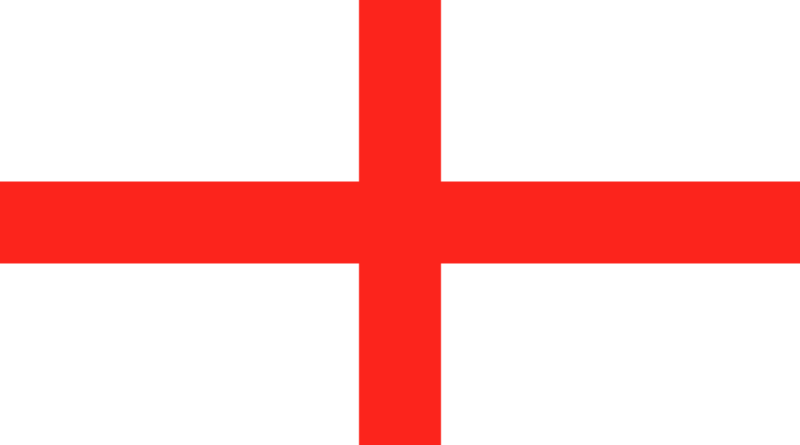Immigration Debate Sparks Surge in British Flag Displays
A heated controversy about immigration policies in the United Kingdom has led to an increasingly popular trend of displaying English and British flags, as a potent proclamation of national pride. This trend, somewhat influenced by right-leaning individuals, has witnessed the flags flying outside of their typical occasions, like royal festivities or sports events. They now flutter from highway overpasses, street lighting poles and various locations in small hamlets, bustling towns and large cities throughout England.
Those participating in this display of patriotism allege that countless St George’s and Union Jacks have been hoisted, changing the visual landscape significantly. Interestingly, traffic circles and intersections have also been adorned with the red and white hues mirroring the English national flag. The St George’s flag, recognised by its red cross against a stark white background, represents England, while the Union Jack encapsulates the emblems of England, Scotland and Northern Ireland.
One of the key advocates of this trend, a 42-year-old woman, is part of an assembly that has already positioned hundreds of the St George’s flags. Emphasising the notion that this movement is not racially motivated, she proclaimed: ‘The British are beginning to express their views. We stand against unlawful migration; it’s a declaration of that stance. We take pride in being English and British, and our quarrel lies with unlawful immigration. We should have the freedom to raise our flag. It shouldn’t cause concern of offending others because this is our land.’
Despite these assurances, others view this trend critically. Advocates for anti-racism highlight this behaviour as divisive, and lay the responsibility at the feet of far-right activists spearheading an initiative titled ‘Operation Raise the Colours’. This assertive exhibit of national pride is generally less commonplace in England and its European contemporaries, compared to the United States where the practice of showing the Stars and Stripes is deemed as ordinary.
There exists a historical association of the English national flag with far-right extremism. This has become a cause for concern among many citizens, who have traditionally treaded carefully around nationalism. However, the sentiment towards the flag saw a shift in the 1990s. It was during this period the flag began to be viewed as a benign tool for expressing support for English sports teams and showcasing cultural pride.
The flags’ symbolism has been further thrust into the spotlight, with the emergence of Nigel Farage’s Reform UK party, which has an anti-immigration stance. The party has managed to stir fervor towards the issue by spotlighting the arrival of boats carrying migrants from France. The party enjoyed record success in the local elections in May, and is leading national polls, even though the next general election is not scheduled until 2029.
Recently, the UK Prime Minister disclosed his personal pride in these flags. He revealed that there are both Union Jack and St George’s flags in his official Downing Street office and residence. He expressed his admiration for these symbols on a radio talk show, ‘I deem these flags to be patriotic—they beautifully represent our nation.’
Despite manifesting his pride, the Prime Minister also noted a cautionary point during his radio conversation. ‘However’, he said, ‘it’s vital these symbols are not undermined or trivialized. When they are utilized strictly for divisive objectives, it essentially depreciates the value of the flag.’
Meanwhile, across the Irish Sea, another flag-related controversy is brewing between Dublin City Council and groups who have hoisted the Irish tricolour on streetlights in areas with a high population of immigrants. In their own way, these groups are also taking part in a protest, flagging their own concerns and issues.
In conclusion, the immigration debate in the UK has revitalised symbolism associated with national flags and sparked heated conversations concerning nationalism, sparking both unification and division. As these debates continue, it remains to be seen how this trend will evolve and what impact it has on the social fabric of Britain.
Both sides of the discussion have valid reasons for their beliefs – be it an expression of national identity and issues they stand for, or the concern against a divisive symbol that may potentially be exploited by extreme factions. It shows the complexity of the matter at hand, and indicates the necessity for an open dialogue.
Most importantly, this new trend exhibits dynamics of nationalism, cultural identity, and the extent to which elements of the public sphere are ready to articulate their concerns. What began as a quiet display of patriotism is now playing out in front of a national, and even international, audience.
The focus has now shifted to understanding the implications of such actions and managing them appropriately. Whether these flags become symbols of division or symbols of unity will largely depend on how they are utilized by the individuals hoisting them.
These narratives remind us that flags are not just decorative symbols; they carry a heavier meaning reflecting the political, cultural and social ambivalences of the times. It is thus essential for everyone to continue interrogating the trends in national symbolism as an integral part of understanding the evolving national identity.
As the UK finds a way forward in this debate, it serves as a lesson for other nations as well, about the power of national symbols and the challenges they can bring. This not only paints a picture of contemporary Britain, but also highlights the global dynamic of immigration, nationalism, and how these issues are played out in public.

